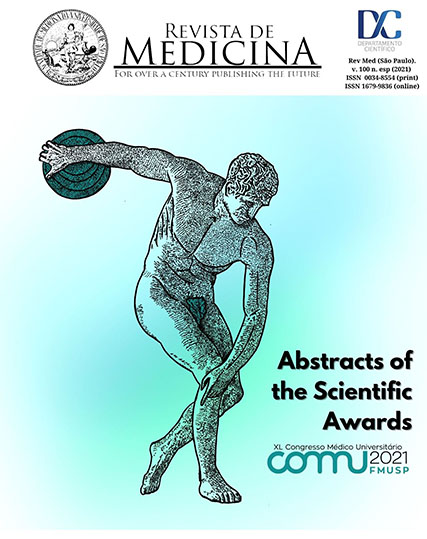Deep brain stimulation in primary Meige’s syndrome: a successful case report
DOI:
https://doi.org/10.11606/issn.1679-9836.v100iespp20-20Palavras-chave:
Meige's syndrome, Deep brain stimulation, Blepharospasm, DystoniaResumo
Introduction: Meige’s Syndrome is a rare focal dystonia disorder characterized mainly by blepharospasm and orofacial dystonia. Dystonia is identified as a movement disorder, with abnormal involuntary movements and postures, caused by sustained or intermittent muscle contractions. Its pathophysiology is not fully elucidated, but it is known that its evolution is due to an abnormal excitability of the sensorimotor cortex and the interneural pathways of the brainstem, a genetic predisposition and environmental factors. Treatment includes various interventions, ranging from conservative approaches to invasive surgical procedures. Oral medications such as anticholinergics, dopamine antagonists and GABA receptor agonists shows positive results, also botulinum A injection can be used as treatment. If any of those conservative alternatives are not providing the required results, deep brain stimulation (DBS) of globus pallidus interna (GPi) provides an invasive neuromodulation that has been presenting improvement of symptoms in individuals with previous failure in other forms of treatment. Objectives: The purpose of this case report is to show the effectiveness of treatment with deep brain stimulation of GPi in a patient with Meige Syndrome that has undergone several other approaches previously. Because it is a surgical procedure, there are risks of adverse effects, but most of them can be minimized or even stopped by the correct programming of the intracerebral electrodes. This case report shows that the deep brain stimulation of Gpi is more efficient than other treatments when well indicated, besides having a better index of improvement when compared to the stimulation of the subthalamic nucleus. The authors do not have any conflict of interests. Case report: A 66-years-old man started suffering involuntary contractions of the orofacial muscles associated with blepharospasm that impaired his quality of life. He was diagnosed with Meige syndrome by a neurologist specialized in movement disorders. Before starting the treatment, he was extremely depressed with suicidal ideas and his psycho-affective relationship with family deteriorated since those symptoms started. Therefore, he was under follow-up with a psychologist and psychiatrist, who prescribed antidepressants Duloxetin 30 mg 12/12 oral and Nortriptyline 25 mg 12/12 oral. The patient was unresponsive to the conventional treatment. He had pharmacological treatment with Levodopa, Trazodone and Lorazepam without benefits. He also underwent several botulinum toxin applications for one year and two eyelid lift surgeries, also without success. He was referred to a functional neurosurgeon, who proceeded with the Gpi-DBS implantation in the patient, in February 2021, with an ActivRC generator. The surgery was performed with the patient awake and bilateral microrecording was used to help locate the target. After 4 weeks of surgery and correct programming of the electrodes - 3387 from Medtronic, 130 Hz, 90 PW, 2.5 mA, 1.5 mm2 contact area and 1.5 mm interelectrode spacing, with rechargeable battery -, the patient evolved with an improvement of 80% of the symptoms he presented before the surgical procedure.
Downloads
Downloads
Publicado
Edição
Seção
Licença
Copyright (c) 2021 Daniela Rumi Fujita, Fernanda Lopes Rocha Cobucci, Ana Flavia Calvo, Katharina Leal Goto, Giovana Cassia de Almeida Motta, Paulo Henrique Pires de Aguiar, Nilton Alves Lara Júnior

Este trabalho está licenciado sob uma licença Creative Commons Attribution-ShareAlike 4.0 International License.




